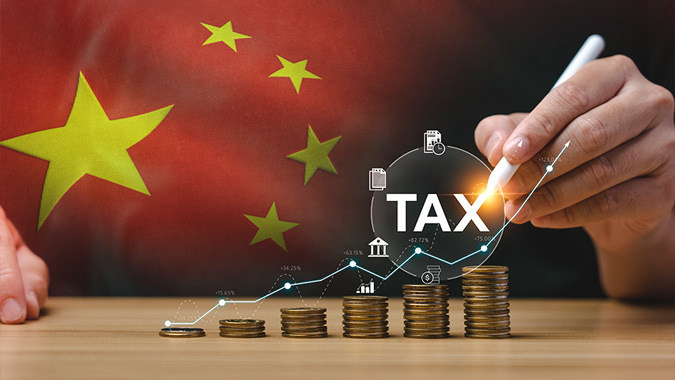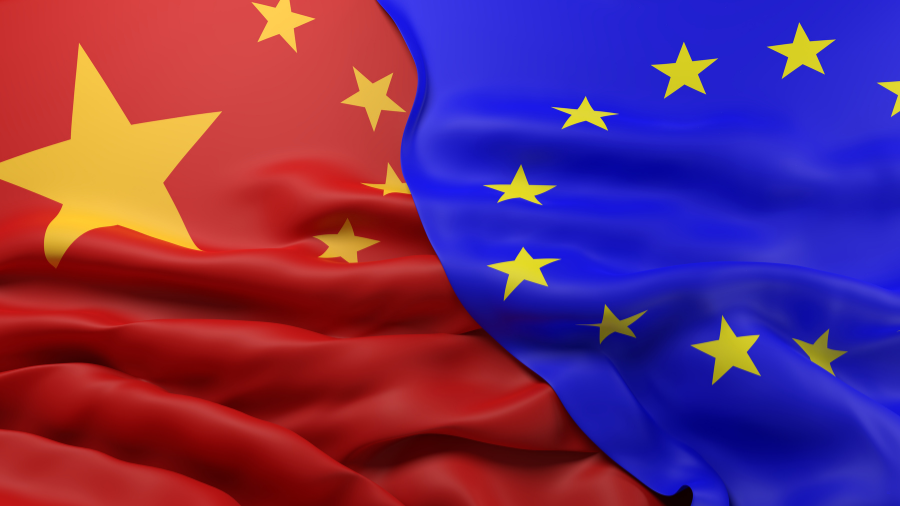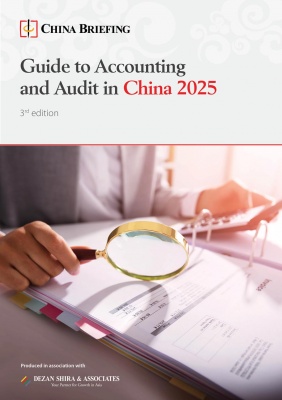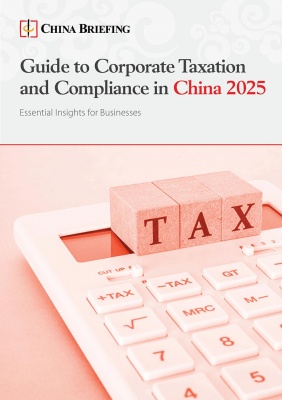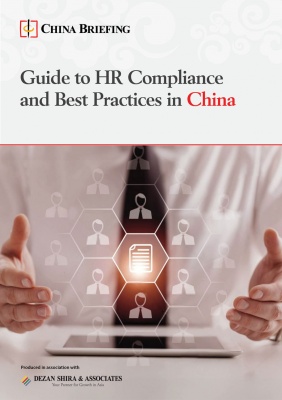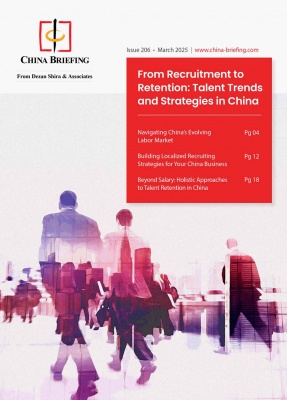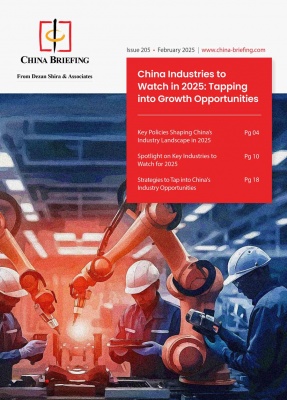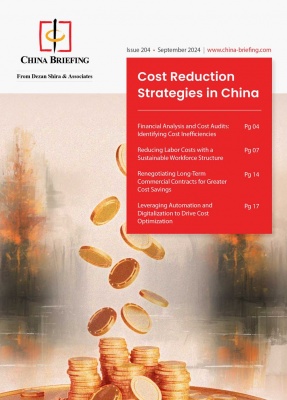China-Peru Trade 2.0: What the Future Holds under the Upgraded FTA
China-Peru economic ties are deepening beyond traditional trade. With enhanced cooperation in mining, agriculture, infrastructure, manufacturing, and the digital economy, the bilateral relationship is set to enter a new phase of high-quality, diversified growth. This article outlines emerging opportunities and future directions for both sides.
On November 2, 1971, the People’s Republic of China and the Republic of Peru formally established diplomatic relations. Since then, bilateral ties have steadily deepened, especially in the economic realm. In November 2008, the two countries upgraded their relationship to a strategic partnership, which was elevated further in April 2013 to a comprehensive strategic partnership—signaling a shared commitment to closer political, economic, and cultural cooperation.
Today, China stands as Peru’s largest global trading partner, top export market, and leading source of imports. Meanwhile, Peru ranks as China’s fourth-largest trade partner in Latin America. These robust ties are underpinned by mutual economic complementarity, reinforced by the 2019 signing of a Memorandum of Understanding on Belt and Road cooperation and the near-finalization of negotiations to upgrade their bilateral Free Trade Agreement (FTA), announced in June 2024.
China-Peru trade
Since establishing diplomatic relations in 1971, China and Peru have witnessed rapid growth in bilateral trade. A major turning point came in 2011 when China overtook the United States to become Peru’s top trading partner and largest export destination. By 2014, China had also become Peru’s largest source of imports. Even during periods of global economic downturn and commodity price slumps, Peruvian exports to China remained resilient—outperforming exports to other key markets such as the United States, Switzerland, and Brazil.
China has long been a key destination for Peru’s traditional exports, such as minerals and fishmeal. More recently, it has emerged as a major market for non-traditional Peruvian products, including squid, grapes, avocados, blueberries, and seaweed powder. These exports not only add diversity to China’s food market but also create significant employment opportunities in Peru’s agricultural and fisheries sectors. China has maintained its position as Peru’s top trading partner for ten consecutive years, while Peru continues to be China’s fourth-largest trade partner in Latin America.
In 2024, bilateral trade totaled US$39.76 billion, reflecting a year-on-year increase of 10.9 percent. Peru’s exports to China reached US$25.23 billion, up 9.2 percent, with particularly strong growth in fishmeal (92.6 percent), silver concentrate (215.5 percent), and iron ore (6.3 percent). China accounted for 34 percent of Peru’s total exports.
On the import side, Peru imported US$14.53 billion worth of goods from China in 2024, a 14 percent increase compared to the previous year. Key imports included electronic and information technology equipment, steel products, vehicles, and clothing—with respective growth rates of 11.3 percent, 5.4 percent, and 4.4 percent. China represented 28 percent of Peru’s total imports.
Peru’s trade surplus with China stood at US$10.69 billion in 2024. Overall, trade with China accounted for 31.6 percent of Peru’s total foreign trade. Notably, China remains the dominant destination for Peru’s mining and fisheries exports, absorbing 49 percent and 46 percent of sectoral exports, respectively.
| China-Ethiopia Bilateral Trade, 2019-2023 | ||||||
| Year | Import & export (US$ billion) | China’s export (US$ billion) | China’s import (US$ billion) | Import & export YoY (%) | China’s export YoY (%) | China’s import YoY (%) |
| 2019 | 23.70 | 8.51 | 15.18 | 3.1 | 5.6 | 1.8 |
| 2020 | 23.01 | 8.87 | 14.15 | -2.9 | 4.1 | -6.9 |
| 2021 | 37.31 | 13.30 | 24.01 | 58.1 | 50.0 | 62.9 |
| 2022 | 37.64 | 13.53 | 24.11 | 0.4 | 2.0 | -0.5 |
| 2023 | 37.68 | 12.11 | 25.57 | 0.1 | 10.5 | 6.0 |
Source: General Administration of Customs of China
| Top China Imports from Peru in 2024 | |
| Category | Value (US$, million) |
| Ores, slag and ash | 24,953.2 |
| Residues and waste from the food industries; prepared animal fodder | 1,472.2 |
| Copper and articles thereof | 1,257.0 |
| Edible fruit and nuts; peel of citrus fruit or melons | 533.4 |
| Mineral fuels, mineral oils and products of their distillation; bituminous substances; mineral waxes | 265.3 |
Source: ITC Trade Map
| Top China Exports to Peru in 2024 | ||
| Category | Value (US$, million) | |
| Nuclear reactors, boilers, machinery, and mechanical appliances; parts thereof | 2,121.3 | |
| Electrical machinery and equipment and parts thereof; sound recorders and reproducers, television image and sound recorders and reproducers, and parts and accessories of such articles | 1,946.5 | |
| Vehicles other than railway or tramway rolling stock, and parts and accessories thereof | 1327.2 | |
| Iron and steel | 983.5 | |
| Plastics and articles thereof | 961.0 | |
Source: ITC Trade Map
China-Peru investment
China’s investment footprint in Peru has steadily expanded, driven primarily by the mining sector, and it is also branching into a diverse array of industries. According to China’s Ministry of Commerce, Chinese direct investment flows into Peru reached US$75.54 million in 2023, bringing the cumulative stock to US$2.35 billion by year-end. Chinese enterprises have become active players not only in resource extraction but also in trade, logistics, construction, fisheries and aquaculture, forestry, assembly, real estate, and finance.
Notable Chinese-invested mining projects in Peru include the Las Bambas copper mine operated by China Minmetals; the Toromocho copper mine led by Chinalco, and the Shougang Hierro Perú iron ore project. Other operational projects include the tailings recycling project by Shouxin, the Rutas de Lima infrastructure project by China Three Gorges (CTG), and China Southern Power Grid’s Boluos project. Several additional Chinese-led projects are under development, such as the Galeno copper project (Minmetals and Jiangxi Copper), the Río Blanco copper mine by Zijin Mining, and the Pampa de Pongo iron ore project.
|
China Investment in Peru, 2019-2023 |
||
| Year | Annual flow (US$, million) | Year-end stock (US$, million) |
| 2019 | 352.0 | 1398.9 |
| 2020 | 321.7 | 1705.1 |
| 2021 | 454.5 | 2181.4 |
| 2022 | 207.8 | 2309.5 |
| 2023 | 75.5 | 2350.2 |
Source: Ministry of Commerce of China, National Bureau of Statistics, and State Administration of Foreign Exchange
Peru’s investment appeal
Peru’s appeal as an investment destination is underpinned by a stable political environment, progressive economic reforms, and abundant natural resources. Since the mid-20th century, Peru has gradually stabilized its domestic order and pursued market liberalization, including the privatization of state-owned enterprises and reduction of import tariffs. The government actively promotes foreign investment in energy and mining, infrastructure development, and value-added industries. Efficient administrative procedures, transparent tax and legal systems, and liberal foreign exchange policies further strengthen Peru’s competitiveness.
Peru is widely regarded as one of the lower-risk countries for investment in Latin America. Its strategic Pacific location, convenient sea-land-air connectivity, and improving digital governance systems enhance investor confidence. In recent years, the government has launched initiatives to support enterprise innovation and productivity. The Ministry of Production’s “Peru Innovates” program offers innovation training, tech supplier matching, and preferential financing to support business transformation. Its “ProInnóvate” platform focuses on entrepreneurship, corporate innovation, productive development, and ecosystem building, fostering collaboration between traditional industries and high-tech sectors.
With a combination of rich resource endowments, sound macroeconomic fundamentals, and an increasingly innovation-friendly environment, Peru presents compelling long-term opportunities for Chinese investors.
China-Peru agreement
Bilateral economic cooperation between China and Peru has been underpinned by a growing framework of trade and investment agreements signed over the decades. These agreements have laid the foundation for deepening commercial ties, ensuring mutual benefits across a wide range of sectors. Key milestones include:
- 1972 – Trade Agreement between the Government of the People’s Republic of China and the Government of the Republic of Peru
- 1994 – Agreement on the Encouragement and Reciprocal Protection of Investments
- 2009 – China–Peru FTA
- 2016 – Memorandum of Understanding on a Joint Study for the Upgrade of the China–Peru FTA
- 2019 – Memorandum of Understanding on Jointly Promoting the Belt and Road Initiative
- 2024 – Cooperation Plan on Jointly Building the Belt and Road
- 2024 – Protocol on the Upgrade of the China–Peru Free Trade Agreement
- 2024 – Memorandum of Understanding on Promoting Green Development Investment Cooperation
These agreements reflect a shared ambition to expand cooperation beyond traditional trade into areas like innovation, green development, and digital commerce.
China-Peru FTA
The China–Peru FTA, signed in April 2009 and implemented in March 2010, marked a major leap in bilateral economic relations. As China’s first comprehensive FTA with a Latin American country, it covers a wide range of areas, including trade in goods and services, investment, customs procedures, rules of origin, intellectual property rights, geographical indications, and sanitary and phytosanitary measures.
Under the agreement, both countries agreed to eliminate tariffs on over 90 percent of traded goods in a phased manner. Products were divided into five categories, with the majority entering zero-tariff status in the year of implementation:
- Category I: Immediate zero-tariff coverage for over 61 percent of China’s tariff lines and 62 percent of Peru’s.
- Category II: Tariff elimination within five years.
- Category III: Tariff elimination within ten years.
- Category IV: Exception list (no tariff concessions).
Chinese exports such as light industrial goods, electronics, appliances, machinery, chemicals, vegetables, and fruits have benefited from the agreement, while Peru enjoys expanded market access for products like fishmeal, minerals, and seafood. The FTA has also enhanced cooperation on intellectual property and cultural heritage protection. For instance, Peru recognizes the geographical indications of 22 Chinese products, including Pu’er tea, West Lake Longjing tea, and Anxi Tieguanyin, while China provides GI protection for Peruvian products such as Pisco, Chulucanas ceramics, Cusco giant corn, and Ica beans.
While some products such as wheat, rice, tobacco, and motorcycles remain subject to high tariffs of up to 65 percent, the overall impact of the agreement has been substantial in promoting two-way trade.
FTA upgrade
To further adapt to evolving trade realities, China and Peru launched FTA upgrade negotiations in November 2018. In June 2024, the two sides announced the substantive conclusion of talks. On November 14, 2024, witnessed by President Xi Jinping and President Dina Boluarte, the upgraded protocol was signed in Lima by China’s Minister of Commerce Wang Wentao and Peru’s Minister of Foreign Trade and Tourism Elizabeth Galdo.
The upgraded FTA refines and expands the original agreement. It enhances existing chapters on rules of origin, customs procedures, trade facilitation, sanitary measures, intellectual property, services trade, temporary entry for businesspersons, and investment. It also introduces five new chapters: standards and conformity assessment, competition policy, e-commerce, global supply chains, and trade and environment—bringing the agreement in line with emerging global economic themes.
This upgrade reflects a joint commitment to high-quality economic integration and paves the way for more diversified and sustainable trade and investment flows between China and Peru.
Future prospects
As China and Peru continue to strengthen their economic partnership, the future of bilateral cooperation looks increasingly dynamic. Underpinned by strong resource complementarity, industrial synergies, and growing policy alignment, new opportunities are emerging across both traditional and emerging sectors.
Deeper cooperation in minerals and energy
Peru ranks among the world’s leading producers of copper, zinc, and silver—resources that are essential to China’s manufacturing and green energy transition. Chinese investment in major mining projects such as Las Bambas and Toromocho has already created economies of scale. Looking ahead, the growing demand for strategic minerals like lithium and copper offers fresh momentum for joint development, processing, and industrial chain extension. Additionally, Peru’s untapped solar and wind potential aligns with China’s technological edge in photovoltaics and energy storage, creating favorable conditions for clean energy collaboration.
Expanding agricultural trade and technology exchange
Peru has become an increasingly important supplier of high-value agricultural products to China—including coffee, avocados, blueberries, and seafood. As Chinese consumers seek more premium and diversified food products, demand for Peruvian exports continues to rise. China’s strengths in agricultural technology, such as precision irrigation and breeding, offer pathways for cooperation in modernizing Peru’s agriculture. Joint initiatives such as agricultural demonstration parks and agro-processing ventures can help Peru increase the value-added content of its exports while enhancing competitiveness.
Infrastructure and connectivity
The Peruvian government is actively pursuing infrastructure upgrades, especially in transport, ports, and energy. Chinese enterprises are well-positioned to participate in strategic projects like the expansion of Callao Port and transportation corridors across the Andes. With deeper cooperation under the Belt and Road Initiative, China can also support Peru’s digital transformation, contributing to projects involving smart cities, 5G networks, and e-government platforms.
Industrial collaboration and manufacturing development
Although Peru has established light industries such as textiles and food processing, its overall industrial base remains underdeveloped. China’s experience in industrial upgrading and value chain integration can support Peru’s ambitions in this area. Opportunities exist to introduce efficient production lines, co-develop processed food products for Chinese consumers, and tap into Peru’s rich natural pharmaceutical resources for biopharma innovation. These efforts can help diversify Peru’s economy and enhance its export resilience.
Tourism and people-to-people exchanges
With global landmarks like Machu Picchu, Peru stands to benefit from China’s large and growing outbound tourism market. Eased visa policies and the establishment of direct flight routes would further facilitate tourism flows. Meanwhile, the expansion of Confucius Institutes and Chinese language programs in Peru has deepened mutual understanding. The integration of cultural and tourism initiatives promises to unlock new consumer demand and enhance people-to-people ties.
Looking forward, China–Peru economic cooperation is poised to expand beyond traditional resource and trade flows. The upgraded FTA, along with strong complementarities and broader regional integration, creates a platform for joint ventures in the digital economy, green development, and technology innovation. Collaboration on cross-border e-commerce platforms, renewable energy deployment, and digital infrastructure can usher in a new era of connectivity. If both sides can maintain a balance between resource development and sustainable growth and encourage deeper local engagement, China–Peru relations have the potential to serve as a model for China–Latin America cooperation.
Also Read:
- China-Latin America and the Caribbean: Investment, Trade, and Future Prospects
- China Outbound Direct Investment (ODI) Tracker: 2024-25
- US-China Relations in the Trump 2.0 Era: A Timeline
About Us
China Briefing is one of five regional Asia Briefing publications, supported by Dezan Shira & Associates. For a complimentary subscription to China Briefing’s content products, please click here.
Dezan Shira & Associates assists foreign investors into China and has done so since 1992 through offices in Beijing, Tianjin, Dalian, Qingdao, Shanghai, Hangzhou, Ningbo, Suzhou, Guangzhou, Haikou, Zhongshan, Shenzhen, and Hong Kong. We also have offices in Vietnam, Indonesia, Singapore, United States, Germany, Italy, India, and Dubai (UAE) and partner firms assisting foreign investors in The Philippines, Malaysia, Thailand, Bangladesh, and Australia. For assistance in China, please contact the firm at china@dezshira.com or visit our website at www.dezshira.com.
- Previous Article A Guide to Minimum Wages in China (As of March 21, 2025)
- Next Article Investing in the Future: Opportunities in China’s Humanoid Robotics and Embodied AI Industry


